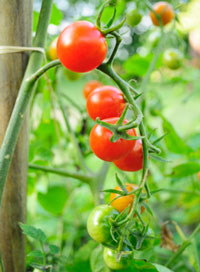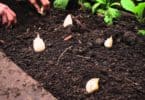Contents
Tomato Plant
Fresh tomatoes are at the top of the list of favorite summertime treats for many people. The taste of homegrown tomatoes just can’t be beat. However, growing them is not as simple as sticking the plants in the ground and watering them. There is a knack to producing a good crop of delicious tomatoes in your garden.
Prepare the plants
- Let the plants get used to the outdoor environment gradually by setting them outside during the day and bringing them back inside at night. Start this process by putting them in the shade at first, and slowly move them to sunnier locations. Let them adjust in this way for about two weeks before transplanting them to the garden.
- You can cover them at night instead of bringing them inside if the weather is not too cold.
Prepare the soil
- Choose a sunny location for your tomato plot for an earlier and more abundant crop. If you have planted tomatoes in the same spot for more than three years, rotate them to a new area for a year or two.
- If you are starting a new garden plot or your soil is heavy or sandy, begin by roto tilling or digging it up. Skip this step if the soil is already good and light to avoid disturbing the valuable earthworms living there.
- Mix aged manure or decomposed compost with blood meal, bone meal and greensand to add nitrogen, phosphorus and potassium, and spread on top of the soil.
Dig the holes
- Place the holes about two feet apart so the plants will get adequate sunshine and air.
- Make the holes about ten to twelve inches deep and wide.
Cover the soil
- Covering your garden plot with plastic will keep it warm and help prevent disease in your plants.
- After the soil is prepared, dig the holes and leave out the soil needed for covering the plants.
- Put one cup of bone meal, one cup of kelp and one or two tablespoons of Epsom salts in the bottom of each hole to provide phosphorus, micronutrients and magnesium to the soil.
- Wet the soil and cover it with plastic, cutting an X over each hole.
Plant the tomatoes
- When the tomato plants are about six inches tall, you can plant them outside. If possible, choose a cloudy day so they will not dry out or be exposed to drastic changes in temperature.
- Put compost into a nylon stocking and soak it in a bucket of water to make a solution rich in nutrients to spray on the leaves of the plants. Bathe each plant in a weak solution of this when you transplant them.
- Be careful not to damage the plants and try to keep the leaves clean to prevent virus or fungus infection.
- Place a plant in each hole, leaving the top four branches above the ground. Wrapping paper around the base of the plant may protect it from cutworms. Replace the soil and water it well.
- If you plan to tie your plants to stakes when they get tall, place the stakes in the ground when you transplant the tomatoes so you won’t disturb the roots by doing it later. Strips of old nylon pantyhose work great for ties, because they have just enough give to keep from damaging the plants.
Care after planting
- Water plants deeply two or three times a week.
- After the plants grow three feet tall, remove the leaves from the bottom third of the stems to discourage fungus growth.
- The best tasting tomatoes are allowed to ripen on the vine, but predators can be a problem. Try putting a plastic bag that zips shut over the ripe tomato and close it from both ends. Leave a small opening on each side for air, and cut a drainage hole in a lower corner of the bag. You will enjoy those tomatoes more when they haven’t been sampled.






